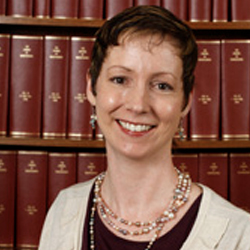Never Going Back: What Online Teaching in the Times of COVID Can Add to Our Teaching Toolkits – Elisabeth Sandberg
by Mohammad Meerzaei
Enhanced Quality Time in Teaching:
Dr. Elisabeth Sandberg, Senior Lecturer in Psychology
H aving taught at least one very large class each semester for years, Sandberg found that teaching online this fall helped her achieve new ways of interacting with students in different stages of their learning. She shares with us her thoughts about refinements of her teaching goals as an outcome of her adventure with online teaching.
aving taught at least one very large class each semester for years, Sandberg found that teaching online this fall helped her achieve new ways of interacting with students in different stages of their learning. She shares with us her thoughts about refinements of her teaching goals as an outcome of her adventure with online teaching.
An instructor of psycho-linguistics, Dr. Sandberg finds herself in a grand-scale case study of human communication in a teaching environment struck by isolation and crisis. Having efficient communication with her students during class is one of the major challenges of teaching in this context for Sandberg, especially with regard to hybrid classes. She finds it a challenge to manage the participation of in-class and online students at the same time. To overcome this difficulty and to make sure that the remote students experience an effective learning experience, she decided to set up an additional weekly hour on Zoom outside of the course schedule for them to catch up with the discussion.
Teaching online has not been all challenges for Sandberg. From this period of teaching, she has gathered a set of experiences that, she expects, will benefit her in an in-person setting, too. For one thing, Sandberg has explored new ways of optimizing the element of time in students’ learning. Realizing that even the most entertaining presenters become soon-to-bore lecturers in online settings, she became more attentive to keeping her prerecorded video lectures brief and dividing them into pieces interwoven with online activities. The Explain Everything app (a collaborative virtual whiteboard platform with multi-media features) has been helpful for annotating these short pieces of recorded lectures. Sandberg’s renewed attention to student attention has also made her more mindful of things she assigns out of class, and what these might represent in terms of student efforts. “I learned over the summer,” she said, referring to the CFT’s Online Course Design Institute, “how to be more cognizant of how much time the things that I consider easy work really take the students. And that was really a revealing piece that I will carry with me when we return to in person.”
Sandberg also stated that teaching online has helped her clarify her expectations for students and build more predictability into structures for homework and other activities. Organizing her Brightspace course into modules, using online tools for monitoring student homework, and using flash card apps and other educational technologies have assisted Sandberg in teaching a more productive course, and she intends to keep all these elements when teaching in-person resumes.
Sandberg’s assessment practices have changed, as well. Sandberg used to use online test platforms even before the pandemic, as a way to reduce printing stacks of papers in her large lecture classes to be more green. Interestingly, the challenge of proctoring exams in a remote learning environment led her to rethink not ways of controlling students’ possible acts of cheating in exams, but the reason why they would be tempted to cheat. Therefore, the decrease in her control over the students’ taking the exams was why she realized that the main impetus behind cheating might in fact be the high-stakes nature of the exams. This line of reasoning led Sandberg to replace her high-stakes exams with a lower-stakes one where the evaluated material is broken down over more exams.
The Zoom experience of sending students to breakout rooms for discussions has also paid off with a lesson for in-person classes. Sandberg has realized that both in-class discussions and asynchronous discussion board activities tend to be significantly more efficient and productive when done in small groups than whole-class discussions.
Renewing contacts with the Center for Teaching is another thing that Sandberg has gained from this period of teaching online and she will hold on to as she goes on with teaching in the future. She took the Online Course Design Institute and got back to the same course to serve as a facilitator twice. As we do at the Center for Teaching, Sandberg also encouraged all the faculty member to reach out to the Center for Teaching and take benefit from its programs resources.
.
.
.
.
.


Leave a Response